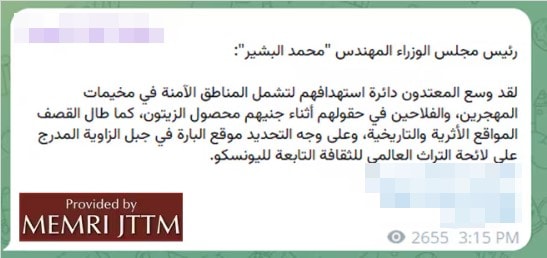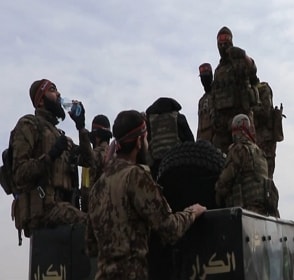The following report is now a complimentary offering from MEMRI's Jihad and Terrorism Threat Monitor (JTTM). For JTTM subscription information, click here.
On October 16, 2024, the Hay'at Tahrir Al-Sham (HTS)-backed Salvation Government in Syria's northwestern province of Idlib said that Russian warplanes had conducted airstrikes in the province targeting civilians and infrastructure.
According to the Department Of Political Affairs in the Salvation Government, the Russian warplanes conducted more than 40 airstrikes in the past 48 hours against targets in Idlib and surrounding areas.[1]
On its Telegram channel, the department published an infographic saying that the Russian bombardment had targeted the Al-Kilani power station in the Darkoush area, west of Idlib, putting it out of service. The poster further said that the airstrikes had targeted: the area around the city of Idlib; the Flood Affairs Department; and the countrysides of Jisr Al-Shughour, Darkoush, and Ariha."

On the same day, Salvation Government Prime Minister Mohammad Al-Bashir said in statement circulated on Telegram that the Russian bombardment had expanded their targeting to include camps for displaced people and farmers harvesting olives in their fields. He said the bombing also targeted archaeological sites, specifically the Al-Bara site in Jabal Al-Zawiya, which he said is listed on the UNESCO World Heritage List.[2]


The Salvation Government Information Ministry issued a statement explaining that the "Russian occupation warplanes directly targeted the archaeological site of Al-Bara in Jabal Al-Zawiya with vacuum missiles, which increases the risk of obliterating the archaeological and historical landmarks in the region, which have stood for thousands of years."[3]

The full text of this post is available to subscribers.
Please login or register to request subscription information from MEMRI






